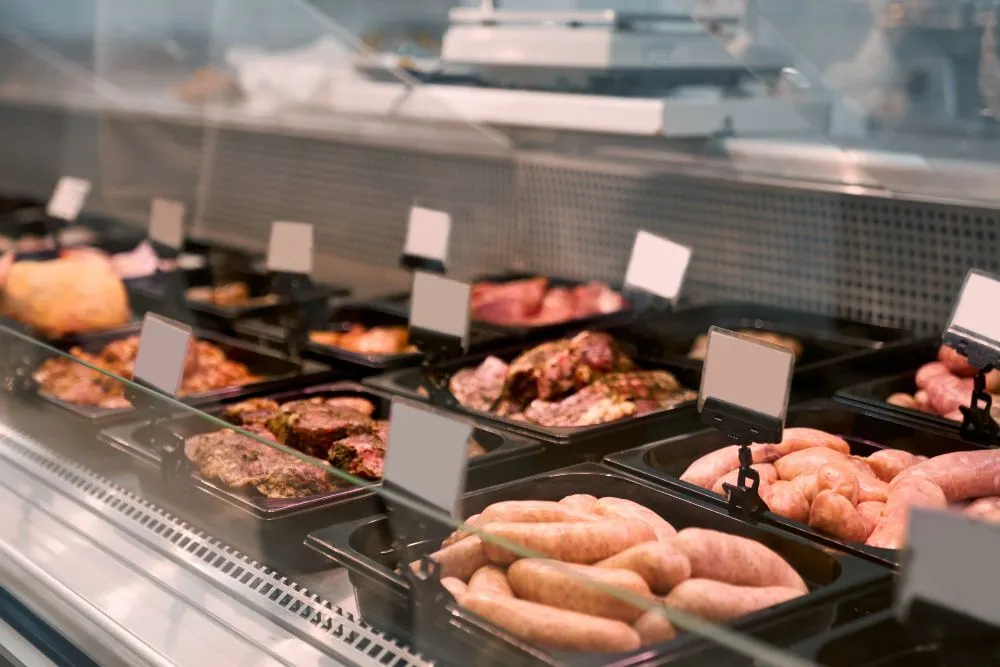- Blog
- Beyond the BOGOs: Unlocking Hidden Savings in Your Supermarket's Meat Department
Beyond the BOGOs: Unlocking Hidden Savings in Your Supermarket's Meat Department

The Sticker Shock Is Real
We’ve all been there. You stroll over to the meat counter, feeling good about your shopping trip. You pick up a nice-looking package of steaks or a couple of chicken breasts, glance at the price sticker, and BAM. The sticker shock hits you. It’s hard to believe how quickly the cost of meat can inflate your grocery bill.
While those big, flashy "Buy One, Get One Free" signs are great, they aren’t the only way to save. The truth is, there are hidden deals hiding in plain sight all across the meat department, and all you need to unlock them is a little know-how. It’s time to stop just buying meat and start thinking like a butcher. With a few simple strategies, you can learn to spot the real value and dramatically cut your costs.
The "Manager's Special" Sticker: Your New Best Friend
Keep an eye out for those bright orange or red stickers. You know the ones—they say "Manager's Special" or "Reduced for Quick Sale." Many shoppers walk right past them, thinking something is wrong with the meat. Here's the secret: that sticker is your new best friend. It doesn't mean the meat is bad; it simply means it’s nearing its "sell-by" date, and the store needs to move it.
This is your chance to score high-quality cuts for 30 to 50% off. The meat is perfectly safe. The only rule is that you must either cook it that same day or take it home and put it directly into your freezer. Freezing hits the pause button, allowing you to enjoy that steak whenever you like.
Look for the "Sell-By" Date, Not the "Use-By" Date
This brings us to another misunderstood part of the meat counter: the dates. It's easy to see a date that’s only a day or two away and get nervous. But it's crucial to understand the difference.
The "Sell-By" date is for the grocery store. It’s an inventory signal for them. The "Use-By" or "Best-By" date, on the other hand, is an estimate about peak quality. Meat is often perfectly safe to cook and eat for several days after the sell-by date, as long as it has been stored properly. This knowledge should give you the confidence to scoop up those marked-down deals without a second thought.
The Art of Buying Big and Breaking It Down
Here’s the single biggest strategy for saving money on meat: you always pay more for convenience. A package of perfectly trimmed chicken breasts costs more than a whole chicken. Cubed stew meat costs more than a chuck roast. Why? Because you’re paying for someone else’s labor.
By investing just a few minutes of your own time at home, you can save a significant amount. This isn’t about needing professional knife skills. It’s about buying larger cuts and breaking them down yourself.
The Whole Chicken Philosophy
A whole chicken is one of the best values in the entire store. It often costs much less per pound than pre-cut parts. With a few simple cuts, one chicken can yield two breasts, two thighs, two drumsticks, and two wings. Enough for multiple meals!
But the savings don’t stop there. Don’t throw away the carcass! Toss it in a pot with some water and veggies, and let it simmer. In a couple of hours, you’ll have a rich, flavorful, and completely free chicken stock. A whole chicken is truly the gift that keeps on giving.
Master the Chuck Roast and the Pork Loin
This "buy big" philosophy extends to beef and pork, too. A large beef chuck roast is far cheaper per pound than those little trays of pre-cut "stew meat." You can bring that roast home and cut a portion of it into cubes for stew, leave a piece whole for a Sunday pot roast, and even slice some of it thinly for stir-fry.
The same goes for a whole pork loin. You can often find them for a fantastic price at warehouse clubs like Costco or on sale at your local supermarket. From that one large piece, you can slice your own thick-cut pork chops, thin cutlets, and still have a small roast left over.
Know Your Grades and Grinds
Beyond the cut, understanding the labels can make you a much smarter shopper. It's all about knowing what you're paying for to get the best value. Understanding USDA Grades: Choice vs. Select
When buying beef, you’ll see "USDA Choice" or "USDA Select." "Choice" has more fat marbling, making it more tender and flavorful. "Select" is leaner and less expensive. Here’s the secret: you don’t always need "Choice." If you’re making a dish where the meat will be slow-cooked for hours, like a beef stew, a "Select" cut is a fantastic, economical choice. The slow cooking will make it perfectly tender, and you’ll have saved money without sacrificing flavor.
The Ground Beef Equation: Is 80/20 Always the Best Deal?
You'll see different ratios for ground beef, like 80/20 or 90/10, representing the lean-to-fat ratio. It’s tempting to grab the fattier, cheaper option. However, a lot of that weight is fat that will just cook off. Sometimes, paying a little more for a leaner grind, especially when it’s on sale, is a better value because you end up with more edible meat. Think about the cooked value, not just the package price.
Become the Boss of the Meat Counter
The next time you approach the meat counter, you won't see high prices—you'll see opportunities. A 'Manager's Special' becomes a victory. A whole chicken becomes three meals in waiting. You’re no longer just a shopper; you’re the boss of your budget.
And the first step for any boss? Checking the weekly intel. Before you head out, let Smartdealshub.co show you where the best deals on those roasts and chickens are hiding this week at stores like Kroger, Publix, and Albertsons. Happy hunting!
blog.latest_articles
CATEGORIES
Copyright © 2025 SmartDealsHub. All rights reserved. It is forbidden to copy or reproduce the texts without prior written agreement. Product photos, images and brochures are for illustrative purposes only. Discounted prices come from official distributors listed on this site. Offers are valid from and until the expiration date or while supplies last. The purpose of this site is informative and cannot be used to claim the products. Prices may vary depending on the location.


